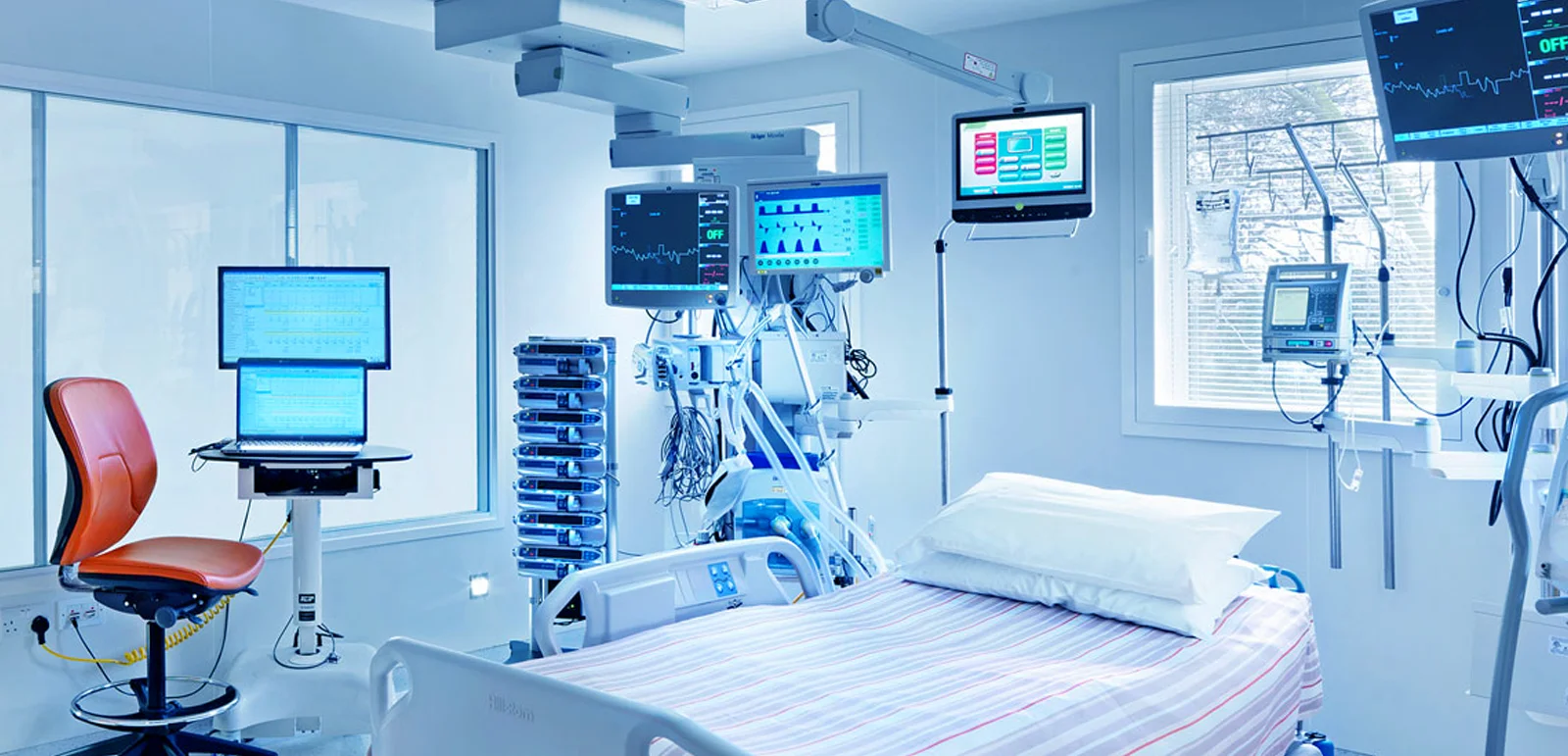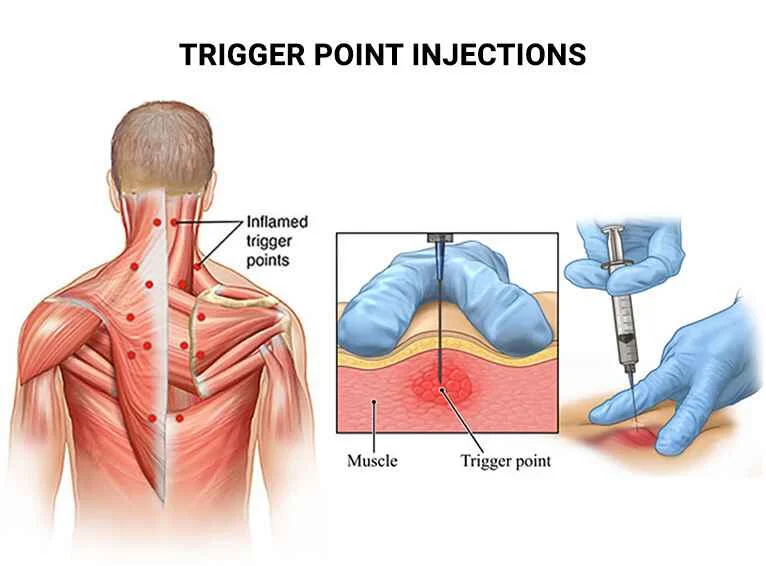Critical Care Unit
What is a critical care unit?
A critical care unit (CCU) is a specialized department of a hospital or healthcare facility that offers intensive care medicine. It is sometimes called an intensive care unit (ICU) or an intensive treatment unit (ITU). Patients in critical care units (ICUs) get intense treatment for illnesses and injuries that are severe or life-threatening. These patients need round-the-clock monitoring, life support, and medicines to maintain normal body functioning.
A critical care unit is commonly denoted by the initials CCU. In this sense, the terms critical care and intensive care are interchangeable and refer to the same kind of treatment. CCU and ICU can be used interchangeably in this situation.
A CCU also referred to as a cardiac or coronary care unit, is a more specialized type of unit seen at various institutions. A CCU can signify various things. It can represent an intensive care unit (ICU) or a critical care unit, which is similar.
A hospital or healthcare facility’s specific section that offers intensive care medicine is called an intensive care unit (ICU), often referred to as an intense therapy unit, intensive treatment unit (ITU), or critical care unit (CCU).
A cardiac care unit, or CCU for short, is a specialized unit for patients with heart-related issues.
Units specifically designed for patients requiring round-the-clock care include intensive care, critical care, and cardiac care.
Intensive care units treat patients who have serious or potentially fatal conditions or injuries. These patients need round-the-clock medical attention, close monitoring, life support technology, and medication to maintain normal body functioning. They employ highly skilled medical professionals with a focus on critical illness care, including nurses, respiratory therapists, and doctors. A larger staff-to-patient ratio and access to advanced medical resources and equipment that are not regularly available elsewhere set intensive care units apart from conventional hospital wards. Acute respiratory distress syndrome, septic shock, and other life-threatening diseases are frequently treated in intensive care units.
Patients who rapidly deteriorate may be referred straight from an emergency room, a ward, or right after surgery if the procedure is highly invasive and the patient is at high risk of complications.
What is critical care?
Medical care for patients with illnesses or injuries that pose a serious risk to life is known as critical care. Usually, an intensive care unit (ICU) hosts it. You receive round-the-clock care from a group of medical professionals with specialized training. This includes having your vital indicators continuously monitored by devices. Additionally, you’re typically given specialized therapies.
Who needs critical care?
If you have any of the following life-threatening illnesses or injuries, you need critical care:
- Severe burns
- COVID-19
- Heart attack
- Heart failure
- Kidney failure
- People recovering from certain major surgeries
- Respiratory failure
- Sepsis
- Severe bleeding
- Serious infections
- Serious injuries, such as those suffered in vehicle accidents, falls, and gunshots
- Shock
- Stroke
- Acute respiratory distress syndrome (ARDS)
- Information about cardiac care units
- Heart patients can receive specialized care in a dedicated unit at certain hospitals.
Post-operative care:
- Complex surgeries, such as heart or brain surgery, may require recovery in a CCU.
- Patients with complications after surgery may also need CCU care.
Other conditions:
- Neuromuscular conditions like Guillain-Barre syndrome or myasthenia gravis
- Metabolic disorders that severely affect vital organs
- Severe allergic reactions
- Pregnancy complications that threaten the mother or baby
- Certain infectious diseases like meningitis or encephalitis
Ultimately, the decision of whether or not to admit a patient to a CCU is made by a doctor based on the individual’s specific situation and medical needs.
Here are some factors that doctors may consider:
- The severity of the illness or injury
- Risk of complications
- Need for specialized equipment and treatment
- The patient’s overall health and prognosis
It is important to note that not everyone who needs intensive care will be admitted to a CCU. Some hospitals may have limited CCU beds, and some patients may be able to receive the care they need in a less intensive setting.
Purpose of a CCU
The primary purpose of a CCU is to provide intensive care for patients who are critically ill and require close monitoring and support of their vital functions. This may include patients who have:
- Suffered a major trauma or injury
- Undergone major surgery
- Experienced a sudden decline in health due to a serious illness or condition
- Are you in a coma or have a severe neurological impairment?
Goals of CCU therapy
The goals of CCU therapy are to:
- Stabilize the patient’s condition
- Treat the underlying cause of the patient’s illness or injury
- Prevent further complications
- Release the patient to their home or a lesser level of care
Types of CCU
There are different types of CCUs, each of which is specialized to care for patients with specific conditions. Some of the most common types of CCUs include:
Medical CCU: This type of CCU cares for patients with medical conditions, such as heart failure, respiratory failure, or kidney failure.
Surgical CCU: This type of CCU cares for patients who have undergone major surgery or who have surgical complications.
Neurological CCU: This type of CCU cares for patients with neurological conditions, such as stroke, brain injury, or spinal cord injury.
Neonatal ICU (NICU): This unit cares for critically ill newborns and infants.
Pediatric ICU (PICU): This unit treats critically ill children and adolescents.
Trauma ICU: This unit treats patients who have been injured in accidents or other violent events.
Coronary Care Unit (CCU): This type of CCU cares for patients with heart-related problems, such as heart attacks, arrhythmias, or coronary artery disease.
What happens in a critical care unit?
Healthcare professionals use a variety of equipment in a critical care unit, including:
- Devices that take your vital signs and show them on a screen
- You can breathe in more oxygen when you receive oxygen therapy.
- Tracheostomy tubes: these are tubes used for breathing. The tube is inserted into a surgically created opening that passes through the windpipe and the front of the neck.
- Breathing machines, or ventilators, circulate air into and out of your lungs. Those who suffer from respiratory failure should use this.
- Although many of these machines can increase your risk of infection, they can also help keep you alive.
Communication problems can occasionally arise among patients in critical care units. There must be an advance directive in place. This can support your family members and healthcare providers in making critical decisions, such as end-of-life decisions if you are unable
Principles of critical care
The process of caring for patients who either have life-threatening illnesses or are at risk of getting them is known as critical care. High staffing ratios, advanced monitoring, and organ support can be provided in the intensive care unit (ICU), a separate geographic location, to reduce patient morbidity and death. However, providing effective critical care necessitates an integrated strategy that goes beyond the ICU. Preventive measures, early warning and response systems, a multidisciplinary approach before and during an ICU stay, thorough follow-up, or high-quality palliative care are all necessary.
Enhancing a patient’s physiology, providing advanced organ support, and identifying and treating underlying pathological processes are the cornerstones of intensive care management. The best way to do this is by using a multidisciplinary team approach, wherein the admitting “parent” team and a specialized critical care team led by a critical care physician share responsibility.
There are generally two categories of critical care admissions identified:
Planned admissions: patients in need of physiological condition optimization and monitoring before, or typically following, an intervention; an example of this would be the postoperative care of a high-risk major general surgical patient, who needs to be watched for complications following surgery, anesthetic side effects, or increasing of pre-existing comorbidities.
Emergency admissions:
These are patients who require monitoring and support of one or more vital organ functions due to potential or established organ failure. An example of this would be a patient who has septic shock caused by four-quadrant peritonitis and needs invasive ventilation as well as post-operative hemodynamic support.
Variations of a CCU can include:
CICU or CVICU: cardiac, or cardiovascular ICU (intensive care unit)
CCCU: critical cardiac, coronary, or cardiovascular unit
ICCU: intensive cardiovascular care unit
CSRU: cardiovascular surgery recovery unit
Intensive care units (ICUs) offer critical care to patients with heart problems, regardless of whether the term is coronary, cardiac, or cardiovascular. CCUs are typically found in larger hospitals and those that conduct cardiac surgery regularly.
Doctors, nurses, and other healthcare workers with considerable training in cardiac disorders visit the CCU. They’re also trained in systemic intensive care. This is because CCU patients frequently have additional potentially fatal issues.
In the CCU, the patient-to-provider ratio is typically relatively low
Equipment Used in a CCU
CCUs are equipped with a variety of specialized equipment to monitor and support patients’ vital functions. This equipment may include:
- Ventilators: These machines help patients breathe by mechanically moving air in and out of their lungs.
- Monitors: These devices continuously monitor patients’ vital signs, such as heart rate, blood pressure, and oxygen levels.
- Intravenous (IV) lines: These tubes are inserted into a vein to deliver fluids, medications, and nutrition to patients.
- Dialysis machines: These machines help remove waste products from the blood of patients with kidney failure.
- Feeding tubes: These tubes are inserted into the stomach or small intestine to deliver nutrition to patients who are unable to eat on their own.
CCU therapy team
CCU therapy team The CCU therapy team is a multidisciplinary team that includes:
- Physicians
- Nurses
- Respiratory therapists
- Pharmacists
- Social workers
- Dietitians
- Physical therapists
Care Provided in a CCU
The care provided in a CCU is highly specialized and requires a team of highly trained healthcare professionals. This team typically includes:
- Critical care physicians: These doctors are specialists in intensive care medicine and are responsible for overseeing the care of all patients in the CCU.
- Critical care nurses: These nurses are specially trained to care for critically ill patients and provide them with around-the-clock care.
- Respiratory therapists: These therapists are responsible for providing respiratory care to patients who require mechanical ventilation or other respiratory support.
- Pharmacists: These pharmacists work closely with the critical care team to ensure patients receive the appropriate medications and dosages.
- Dietitians: These dietitians work with the critical care team to develop nutrition plans for patients who are unable to eat on their own.
Levels of care
There are many different advanced monitoring and organ support capabilities available in modern critical care medicine. They rely on the layout and size of each unit. Two critical care tiers are indicated below:
An overview of some options for monitoring and supporting critical care organs
| Organ system | Common on ICU | Available in Specialized Units |
|---|---|---|
| Respiratory | IV fluids management Vasopressors and inotropes Arterial and central venous catheters Heart output monitoring: oesophageal Doppler, pulmonary artery flotation catheter, and pulse contour analysis (LiDCO, PiCCO, and others). Pacing of the heart Echocardiography (trans-thoracic and trans-oesophageal) | Extra-corporeal CO2 removal (ECCO2R) Extra-corporeal membrane oxygenation (ECMO) Oscillatory ventilation |
| Cardiovascular | Renal replacement therapy including continuous veno-venous haemo (dia-)filtration or intermittent hemodialysis | Intra-aortic balloon counterpulsation pump ECMO Ventricular assist devices |
| Renal | Renal replacement therapy including continuous veno-venous haemo (dia-)filtration or intermittent hemodialysis |
Level 2, or high-dependency unit (HDU): Admission for single-organ support (excluding invasive ventilation) shouldn’t require the care of every patient by a separate critical care nurse. creates a setting where patients who have organ failure or are at risk of it can be closely monitored:
- Respiratory: arterial blood gases, non-invasive ventilation
- Cardiovascular: invasive arterial pressure monitoring, vasopressors at low doses
- Renal: strict fluid balance management, specific kidney replacement treatments.
Critical Care Unit (ICU), commonly referred to as “level 3”: Admission to deliver advanced monitoring techniques or multi-organ support, which necessitates that every patient see a critical care nurse at least once:
- Respiratory: extracorporeal membrane oxygenation (ECMO), carbon dioxide removal (ECCO2R) in certain centers, and invasive and non-invasive ventilation
- Cardiovascular: ventricular assist devices, intra-aortic balloon pump, advanced cardiac output monitoring, vasopressor and inotropic support, and ECMO
- Renal: treatments for renal replacement
- Neurological: advanced neurological monitoring, EEG, and intracranial pressure monitoring
Critical care organ support
To provide critically ill patients with comprehensive care, it is typically necessary to connect complex data and take a systems-based approach. Certain interventions have been bundled into “care bundles” to provide a consistently high standard of care; these bundles are known to improve outcomes when used in conjunction with one another.
Types of diagnosis
Different specialized ICUs may be found in hospitals, each one serving a particular patient’s needs or medical requirement:
| Name | Description |
|---|---|
| Coronary care unit | provides patients with prompt surveillance and stabilization after surgery and anesthesia. Patients must fulfill specific physiological requirements and are typically detained in these facilities for a short period before being returned to a ward accompanied by a licensed nurse. A patient is typically moved to an intensive care unit to undergo progressive therapy if they violate a time limit and become too unstable to be returned to a ward due to the high patient flow in recovery units and the bed management cycle. |
| Critical care unit | Not only in the United States, but also in other large hospital trauma centers, some separate their primary intensive care unit (ICU) and possibly even their other ICUs into two sections: one for patients in need of routine intensive care (the regular ICU) and another for patients who are very unstable or close to death and require even more care (the critical care unit, or section). |
| specializes in treating patients who have heart problems that pose a risk to their lives, such as myocardial infarction or cardiac arrest. | a specialized critical care unit for the treatment of elderly patients with serious illnesses. |
| High dependency unit | An intermediate ward is designated for patients whose care is not critical enough to justify an ICU bed, but who nevertheless need close observation, therapy, and nursing care that cannot be given in a regular ward. It is used up until the point at which a patient’s health allows them to be released to a general ward or rehabilitation unit. It can also be referred to as a progressive care unit, step-down unit, or intermediate care area. |
| Isolation intensive care unit | a critical care unit for individuals with infectious diseases that need to be medically isolated, whether they are suspected or confirmed. |
| Mobile intensive care unit (MICU) | a dedicated ambulance outfitted with the personnel and tools needed to deliver critical care and advanced life support while being transported. People who are being relocated from hospitals to homes and vice versa are typically placed in mobile intensive care units (ICUs). Specialized advanced life support paramedics typically staff mobile intensive care units (ICUs) in the Anglo-American pre-hospitalization care model. A doctor and nurse typically oversee mobile ICU teams under the European model. |
| looks after newborn patients who haven’t yet left the hospital. Prematurity and related issues, congenital diseases such as congenital diaphragmatic hernia, or difficulties arising from childbirth are among the conditions that are commonly treated. | specializes in treating patients who have heart problems that pose a risk to their lives, such as myocardial infarction or cardiac arrest. |
| Neurological intensive care unit | Pediatric patients are treated in this intensive care unit for life-threatening conditions Asthma, influenza, diabetic ketoacidosis, and traumatic brain damage are just a few examples. Surgical cases may also be referred following surgery if the patient has a potential for rapid deterioration or if the patient requires monitoring, such as spinal fusions, or Surgical procedures involving the respiratory system, such as tonsil or adenoid removal. Some hospitals also offer specialist pediatric cardiac intensive care units where congenital heart disease children are treated. In addition, if the hospital provides postoperative cardiac catheterization and cardiac transplantation, these units usually accommodate those patients as well. |
| Pediatric intensive care unit | looks after newborn patients who haven’t yet left the hospital. Prematurity and related issues, congenital diseases such as congenital diaphragmatic hernia, or difficulties arising from childbirth are among the conditions that are commonly treated. |
| Post-anesthesia care unit | provides patients with prompt observation and stabilization after surgery and anesthesia. Patients must fulfill specific physiological requirements and are typically detained in these facilities for a short period before being returned to a ward accompanied by a licensed nurse. A patient is typically moved to an intensive care unit to undergo progressive therapy if they violate a time limit and become too unstable to be returned to a ward due to the high patient flow in recovery units and the bed management cycle. |
| a specialist program that offers severely ill patients undergoing surgery inpatient treatment at larger hospitals. Unlike other intensive care units, this one is run by critical care-trained surgeons or anesthesiologists. | specializes in treating patients who have heart problems that pose a risk to their lives, such as myocardial infarction or cardiac arrest. |
| Surgical intensive care unit | provides patients with prompt observation and stabilization after surgery and anesthesia. Patients must fulfill specific physiological requirements and are typically detained in these facilities for a short period before being returned to a ward accompanied by a licensed nurse. A patient is typically moved to an intensive care unit to undergo progressive therapy if they violate a time limit and become too unstable to be returned to a ward due to the high patient flow in recovery units and the bed management cycle. |
| Trauma intensive care unit | a specialist program that offers severely ill patients undergoing surgery inpatient treatment at larger hospitals. Unlike other intensive care units, this one is run by critical care-trained surgeons or anesthesiologists. |
Different specialized ICUs may be found in hospitals, each one serving a particular patient’s needs or medical requirement:
What kinds of medical conditions are treated in cardiac intensive care units?
A cardiac care unit may be necessary for your treatment if you:
possess suffered a heart attack or require careful observation following heart failure possess a significant cardiac condition, such as an arrhythmia, cardiomyopathy, unstable angina, or an infection of the heart are healing following cardiac surgery
In addition, the medical staff at a cardiac care unit handles issues that frequently develop in cardiac patients, like:
- Renal failure
- Respiratory failure
- Septile
- Illness
Patients in the critical care unit frequently have concomitant acute or chronic illnesses, which can make treatment more difficult and result in extended hospital admissions.
Quality of care
The quality of care in a critical care unit (CCU) is determined by some factors, including the following:
- The training and experience of the staff: CCUs should be staffed by highly trained and experienced physicians, nurses, respiratory therapists, and other healthcare professionals who are familiar with the latest critical care techniques and protocols.
- The availability of resources: CCUs should have access to the latest technology and equipment, as well as adequate staffing and supplies.
- The use of evidence-based practices: CCUs should use evidence-based practices to provide care to their patients. This means that they should use treatments and interventions that are effective in improving patient outcomes.
- The quality of communication: CCUs should have effective communication systems in place to ensure that all members of the care team are aware of the patient’s condition and treatment plan.
- The patient’s overall health: The quality of care in a CCU can also be affected by the patient’s overall health. Older patients, who have multiple chronic conditions, or are immunocompromised are more likely to experience complications during their stay in a CCU.
Some things can be done to improve the quality of care in CCUs. These include:
- Providing adequate training and education for staff: CCUs should provide their staff with ongoing training and education on the latest critical care techniques and protocols.
- Investing in new technology and equipment: CCUs should invest in new technology and equipment that can be used to improve patient care. This may include things like new ventilators, monitors, and dialysis machines.
- Using evidence-based practices: CCUs should use evidence-based practices to provide care to their patients. This means that they should use treatments and interventions that are effective in improving patient outcomes.
- Improving communication: CCUs should improve communication between all members of the care team. This can be done by using things like huddles, whiteboards, and electronic patient records.
- Focusing on patient-centered care: CCUs should focus on providing patient-centered care. This means that they should involve patients and their families in the decision-making process and should provide care tailored to each patient’s individual needs.
By taking these steps, CCUs can improve the quality of care they provide to their patients and help to improve patient outcomes.
Improving the quality of care in CCUs is an important goal for healthcare providers. By providing high-quality care, CCUs can help to improve patient outcomes and reduce healthcare costs
Treatment of CCU
The treatment of critically ill patients in a critical care unit (CCU) is complex and requires a team of highly trained healthcare professionals. The specific treatments that are used will vary depending on the patient’s condition. However, some of the most common treatments that are used in CCUs include:
Medications: Medications are used to treat a wide variety of conditions in CCUs. Some of the most common medications that are used include antibiotics, painkillers, sedatives, and medications to control blood pressure and heart rate.
Mechanical ventilation: Mechanical ventilation is used to help patients breathe who are unable to breathe on their own. A ventilator is a machine that pumps air into and out of the patient’s lungs.
Intravenous (IV) fluids: IV fluids are used to keep patients hydrated and to deliver medications and nutrients.
Dialysis: Dialysis is a treatment that removes waste products from the blood of patients with kidney failure.
Surgery: Surgery may be necessary to treat some conditions, such as bleeding, infection, or organ damage.
In addition to these specific treatments, CCUs also provide some other supportive care services. These services may include:
- Monitoring vital signs: Vital signs, such as blood pressure, heart rate, and oxygen level, are monitored continuously in CCUs. This allows the healthcare team to identify and address any changes in the patient’s condition quickly.
- Pain management: Pain is a common problem in CCUs. Healthcare providers will use a variety of medications and other techniques to manage pain and keep patients comfortable.
- Nutrition: Patients in CCUs may be unable to eat on their own. Healthcare providers will provide nutrition to patients through IV fluids or feeding tubes.
- Physical therapy: Physical therapy can help patients regain strength and mobility after a critical illness.
- Emotional support: Critical illness can be a stressful and emotional experience for patients and their families. CCUs provide emotional support to patients and their families through a variety of means, such as counseling, support groups, and chaplaincy services.
The goal of treatment in CCUs is to stabilize patients’ conditions and help them recover from their illnesses or injuries. In some cases, patients may make a full recovery and be able to return to their previous level of functioning. In other cases, patients may experience long-term disabilities. The outcome of treatment in CCUs depends on some factors, including the severity of the patient’s condition, age, and overall health.
CCUs play a vital role in the healthcare system by providing life-saving care to critically ill patients. By providing high-quality care, CCUs can help to improve patient outcomes and reduce healthcare costs.
Length of Stay in a CCU
The length of stay in a CCU varies depending on the severity of the patient’s condition. Some patients may only need to stay in the CCU for a few days, while others may need to stay for several weeks or even months.
Visiting a Patient in a CCU
Visiting a patient in a CCU can be a stressful experience. It is important to be aware of the CCU’s visiting hours and policies. You should also be prepared to limit your visits to short periods and to avoid bringing any food or drinks into the CCU.
Risk factors
Risk factors for critical care unit (CCU) admission include:
- Age: The risk of CCU admission increases with age. People aged 65 and over are more likely to be admitted to the CUU than younger people. This is because older people are more likely to have chronic health conditions, such as heart disease, stroke, and cancer, which can lead to critical illness
- Chronic health conditions: People with chronic health conditions, such as heart disease, stroke, cancer, diabetes, and chronic obstructive pulmonary disease (COPD), are at increased risk of CCU admission. These conditions can make it more difficult for the body to cope with stress, which can lead to critical illness.
- Recent surgery: People who have had recent surgery, especially major surgery, are at increased risk of CCU admission. This is because surgery can put a strain on the body, which can lead to complications such as infection, bleeding, and respiratory problems.
- Trauma: People who have experienced trauma, such as a car accident, fall, or gunshot wound, are at increased risk of CCU admission. Trauma can cause severe injuries that require intensive medical care.
- Infection: People with serious infections, such as sepsis, are at increased risk of CCU admission. Severe organ and tissue damage resulting from the body’s reaction to an infection is known as sepsis, which can be fatal.
- Medications: Some medications can increase the risk of CCU admission. These medications include opioids, benzodiazepines, and antipsychotics. These medications can depress the central nervous system, which can lead to problems with breathing and heart function.
- Substance abuse: People who abuse alcohol or drugs are at increased risk of CCU admission. This is because alcohol and drugs can damage the body’s organs and increase the risk of infection.
- Mental health conditions: People with mental health conditions, such as schizophrenia and depression, are at increased risk of CCU admission. This is because people with mental health conditions are more likely to have chronic health conditions, engage in risky behaviors, and not seek medical attention when needed.
- Socioeconomic factors: People from lower socioeconomic backgrounds are at increased risk of CCU admission. This is because people from lower socioeconomic backgrounds are more likely to have chronic health conditions, lack access to quality healthcare, and live in environments that are more conducive to poor health.
It is important to note that not everyone who has one or more of these risk factors will be admitted to the CUU. However, being aware of the risk factors can help people take steps to reduce their risk of CCU admission, such as managing their chronic health conditions, avoiding risky behaviors, and getting regular medical checkups.
Contraindication
contraindication is a reason why a patient should not receive a particular treatment. There are some contraindications for critical care unit (CCU) admission, which is a type of intensive care unit (ICU) that provides care for patients who are critically ill or injured. Some of the most common contraindications for CCU admission include:
- Do-not-resuscitate (DNR) orders: Patients with DNR orders should not be admitted to the CCU, as the goal of care in the CCU is to provide life-sustaining treatment
- Terminal illness: Patients with a terminal illness should not be admitted to the CCU, as the goal of care in the CCU is to provide life-sustaining treatment.
- Severe frailty: Severely frail Patients should not be admitted to the CCU, as they are unlikely to benefit from aggressive treatment.
- Lack of social support: Patients who lack social support should not be admitted to the CCU, as they are more likely to experience complications from critical illness.
In addition to these general contraindications, some specific contraindications may apply to individual patients. For example, patients with certain medical conditions, such as end-stage organ failure, may not be good candidates for CCU admission.
Ultimately, the decision of whether or not to admit a patient to the CCU is a complex one that should be made on a case-by-case basis. The patient’s wishes, their medical condition, and the availability of resources should all be considered.
It is important to note that the contraindications for CCU admission are not absolute. In some cases, patients who meet the criteria for contraindication may still be admitted to the CCU if the benefits of treatment outweigh the risks. For example, a patient with a DNR order may be admitted to the CCU if they have a sudden, life-threatening illness that is expected to improve with treatment.
The decision of whether or not to admit a patient to the CCU should be made by a team of healthcare professionals, including the patient’s primary care physician, the intensivist (a doctor who specializes in critical care medicine), and other relevant specialists. The team should carefully consider the patient’s circumstances and make a decision that is in the patient’s best interests.
Precaution
Precautions in a critical care unit (CCU) are essential to prevent infections and other complications. Some of the most important safeguards are as follows:
- Hand hygiene: This is the most important precaution in a CCU. All staff and visitors should wash their hands with soap and water or use an alcohol-based hand sanitizer before entering the unit and after leaving.
- Personal protective equipment (PPE): Staff should wear appropriate PPE, such as gloves, gowns, and masks when caring for patients in the CUU.
- Isolation: Patients with infections should be isolated from other patients to prevent the spread of infection.
- Environmental cleaning: The CUU should be cleaned regularly to prevent the spread of infection.
- Immunization: All staff and visitors should be up-to-date on their immunizations, including the flu vaccine.
- Avoid overcrowding: The CUU should not be overcrowded to prevent the spread of infection.
- Monitor patients closely: Patients in the CUU should be monitored closely for signs of infection or other complications.
- Early intervention: Early intervention is essential for treating infections and other complications in the CUU.
In addition to these general precautions, there are also specific precautions that may be necessary depending on the patient’s condition. For example, patients with respiratory infections may need to be placed on oxygen therapy or mechanical ventilation. Patients with heart conditions may need to be monitored for arrhythmias and other complications. And patients with cancer may need to be protected from infection by receiving chemotherapy in a negative-pressure room.
Complication
Many possible complications can occur in a critical care unit (CCU):
- Infections: Infections are a common complication in the CUU, as patients are often immunocompromised and have multiple invasive lines and catheters. Common infections include pneumonia, bloodstream infections, and urinary tract infections
- Venous thromboembolism (VTE): VTE is a blood clot that can form in a vein, most commonly in the legs. VTE can be serious, as it can travel to the lungs and cause a pulmonary embolism (PE), which can be fatal.
- Delirium: Delirium is a state of confusion, disorientation, and agitation that can occur in critically ill patients. Delirium is often caused by medications, infections, or dehydration.
- Stress ulcers: Stress ulcers are sores that can develop in the stomach or intestines of critically ill patients. Stress ulcers are caused by the stress of critical illness, which can lead to increased production of stomach acid.
- Myopathies and neuropathies: Myopathies are weakness of the muscles, and neuropathies are damage to the nerves. Myopathies and neuropathies can occur in critically ill patients due to many factors, including malnutrition, electrolyte imbalances, and medications.
- Cognitive impairment: Cognitive impairment is difficulty with thinking, learning, and memory. Cognitive impairment can occur in critically ill patients due to some factors, including delirium, stress, and medications.
In addition to these common complications, many other possible complications can occur in the CUU. The specific complications that a patient develops will depend on their circumstances.
It is important to be aware of the possible complications that can occur in the CUU so that they can be prevented or treated as early as possible
Conclusion
When it comes to a sort of hospital unit, the term CCU can have two meanings. It can also refer to a critical care unit at some hospitals. This is the same as an intensive care unit (ICU), where trained medical experts give the highest degree of care to patients suffering from a range of serious diseases.
A CCU is a cardiac care unit at other hospitals. This is a specialty unit for persons who have major cardiac problems or are recuperating from heart surgery. This unit’s healthcare personnel will have received advanced cardiac care training.
When you no longer require 24-hour critical or specialist cardiac care, you will be moved to a regular hospital room to finish your rehabilitation.
FAQs
What differentiates an ICU from a critical ICU?
Nurses, physicians, pharmacists, respiratory therapists, social workers, physical therapists, and occupational therapists make up the critical care team. Generally speaking, patients with a wide range of ailments are cared for in the ICU, whereas patients with cardiac (heart) disorders are the primary focus of the CCU.
Who visits a critical care unit and why?
When someone is seriously ill and needs close supervision and intensive treatment, or when they are having surgery and need intensive care to help them heal, they need intensive care. The majority of patients in an ICU struggle with one or more organs. For instance, they might not be able to breathe by themselves.
In the CCU, which patients are kept?
A hospital ward that specializes in treating patients with heart attacks, unstable angina, cardiac dysrhythmia, and (in reality) a variety of other cardiac disorders that call for constant monitoring and treatment is known as a coronary care unit (CCU) or cardiac intensive care unit (CICU).
What is a hospital HDU unit?
High Dependency Units (HDUs), also known as step-down, progressive, and intermediate care units, are found in several hospitals. HDUs are wards for persons who require more extensive monitoring, therapy, and nursing care than a regular ward can provide but less intensive care.
What occurs at CCU?
A coronary care unit (CCU) or cardiac intensive care unit (CICU) is a hospital ward that treats patients who suffer heart attacks, unstable angina, cardiac dysrhythmia, and (in practice) a range of other cardiac illnesses that require continual monitoring and treatment.
What exactly does CCU stand for?
The intensive care unit
It is known as a critical care unit, which is comparable to an intensive care unit. A CCU is also known as a cardiac care unit, which is a specialized facility for persons with heart issues. Patients who require 24-hour care are treated in specialist intensive care, critical care, or cardiac care units.
Reference
- Critical Care. (n.d.).
https://medlineplus.gov/criticalcare.html - Intensive care unit. (2023, December 1). Wikipedia. https://en.wikipedia.org/wiki/Intensive_care_unit
- Smith, L. (2022, October 27). What Is an Intensive Care Unit (ICU)? WebMD. https://www.webmd.com/a-to-z-guides/what-is-an-intensive-care-unit-icu
- Pietrangelo, A. (2021, January 14). What’s the Difference Between a CCU and an ICU? Healthline. https://www.healthline.com/health/ccu-vs-icu
- News. (2020, March 4). https://thesignaturehealthcare.com/news/details/26/What-is-ICU-Critical-Care-and-how-it-works-as-a-saviour-for-millions-of-lives-every-year
- Critical Care Units. (n.d.). https://caritasconference.co.in/ourblog/critical-care-units/








One Comment